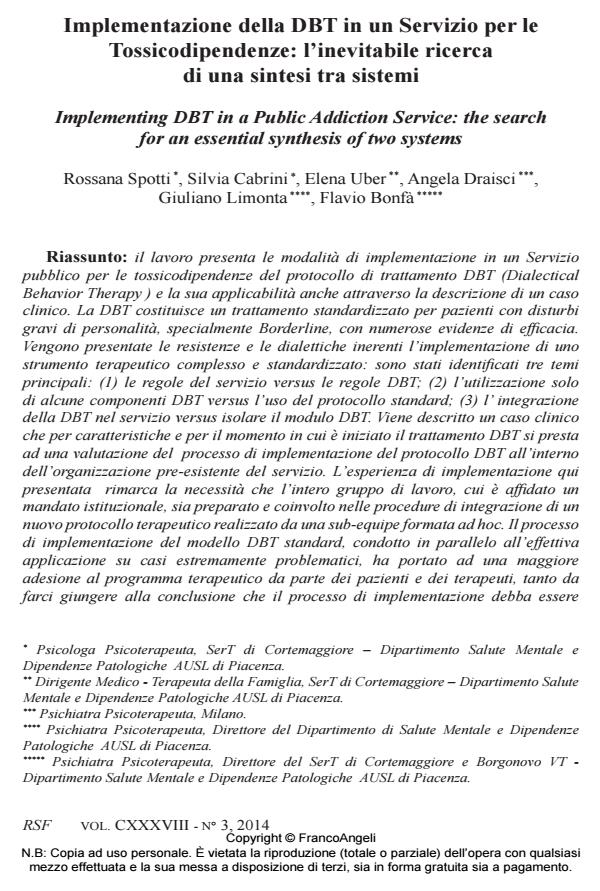Implementing DBT in a Public Addiction Service: the search for an essential synthesis of two systems
Journal title RIVISTA SPERIMENTALE DI FRENIATRIA
Author/s Rossana Spotti, Silvia Cabrini, Elena Uber, Angela Draisci, Giuliano Limonta, Flavio Bonfà
Publishing Year 2014 Issue 2014/3
Language Italian Pages 18 P. 141-158 File size 139 KB
DOI 10.3280/RSF2014-003012
DOI is like a bar code for intellectual property: to have more infomation
click here
Below, you can see the article first page
If you want to buy this article in PDF format, you can do it, following the instructions to buy download credits

FrancoAngeli is member of Publishers International Linking Association, Inc (PILA), a not-for-profit association which run the CrossRef service enabling links to and from online scholarly content.
Rossana Spotti, Silvia Cabrini, Elena Uber, Angela Draisci, Giuliano Limonta, Flavio Bonfà, Implementazione della DBT in un Servizio per le Tossicodipendenze: l’inevitabile ricerca di una sintesi tra sistemi in "RIVISTA SPERIMENTALE DI FRENIATRIA" 3/2014, pp 141-158, DOI: 10.3280/RSF2014-003012